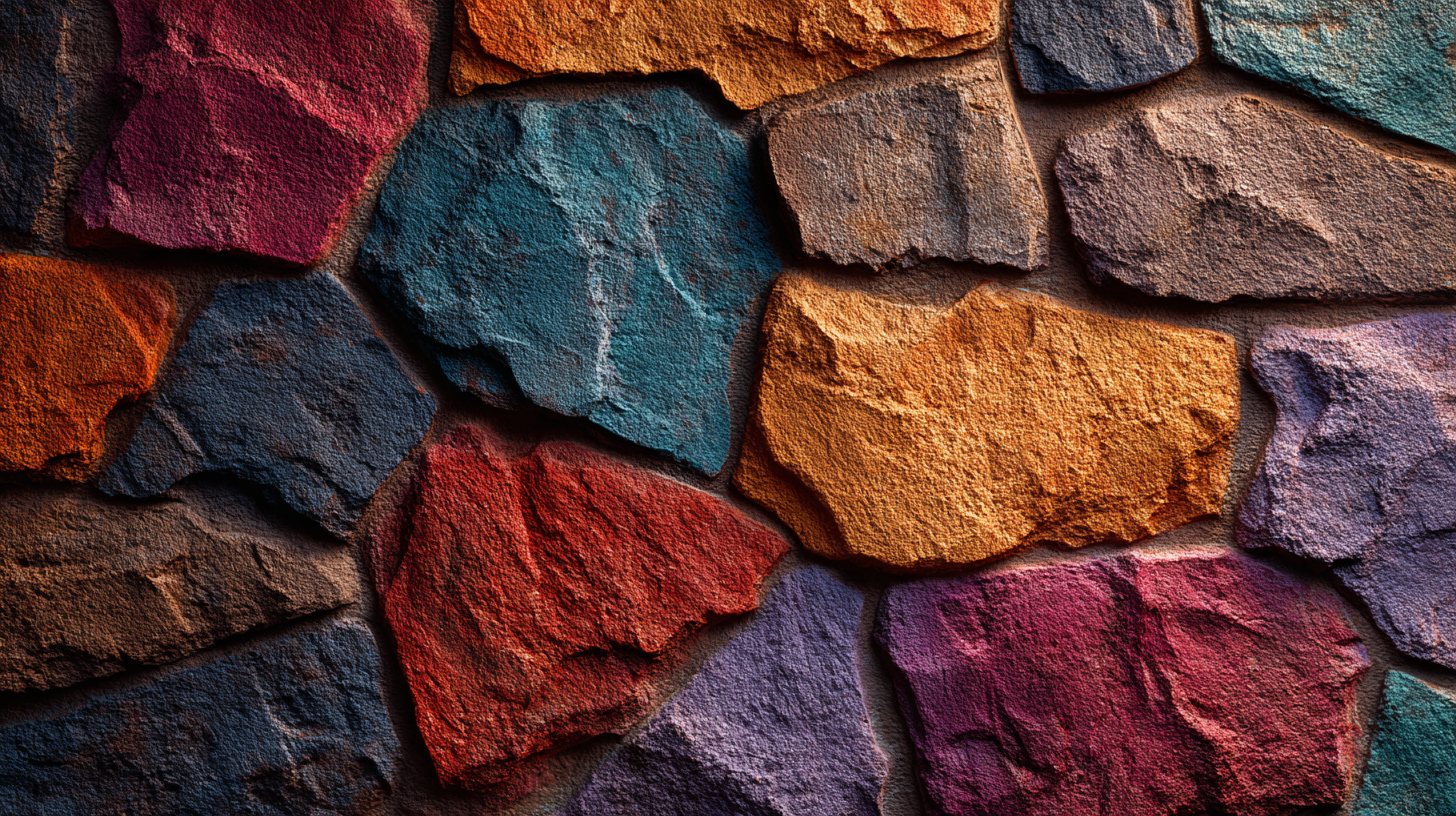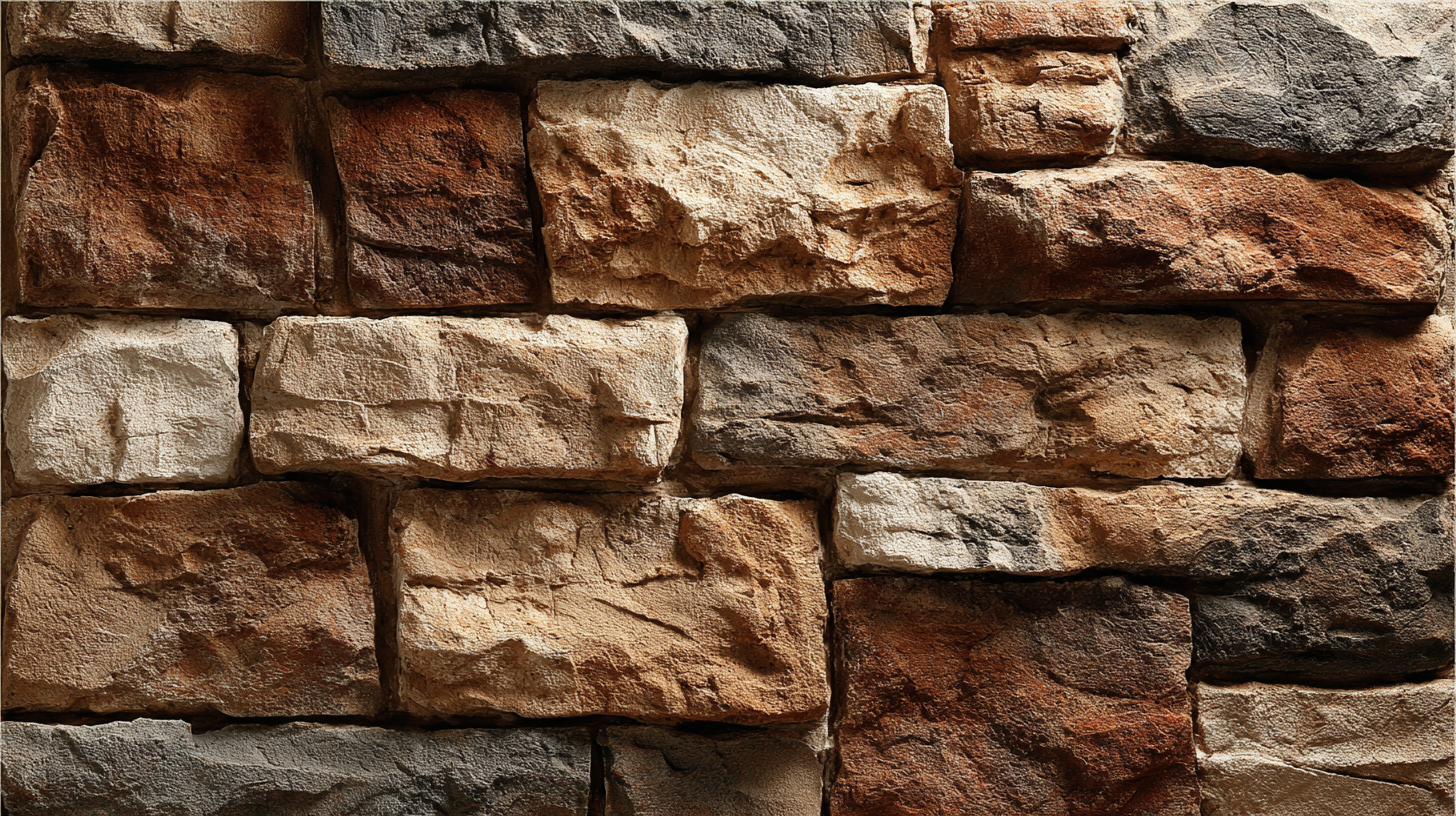In the ever-evolving landscape of interior design, the choice of wall finishes plays a pivotal role in defining aesthetic appeal and durability. Stone Texture Wall Paint has surged in popularity due to its unique ability to mimic the intricate patterns of natural stone while offering the versatility of paint. According to a report by Grand View Research, the global decorative paint market is projected to reach USD 195.3 billion by 2026, with texture painting solutions, including stone textures, capturing a significant share due to their eco-friendly properties and design appeal. As more consumers and designers seek sustainable and visually captivating options for their spaces, understanding how to select the best Stone Texture Wall Paint becomes essential. This guide aims to equip you with the necessary knowledge to navigate the myriad options available in the market, ensuring that your global sourcing needs are met effectively and stylishly.

When selecting stone texture wall paint for global sourcing, several key considerations come into play. First and foremost, it's vital to understand the specific aesthetic and functional requirements of the market you are targeting. Different cultures and regions have distinct preferences regarding textures, colors, and finishes. For instance, a rough-hewn stone finish may resonate well in rustic settings, while a smoother, more polished look could be preferred in modern urban environments.
Conducting thorough market research and understanding local design trends can help ensure that your chosen product aligns with consumer tastes.
Another important factor is the durability and formulation of the paint. Stone texture wall paints should not only adhere well to various surfaces but also withstand environmental elements, especially in regions prone to extreme weather. Look for paints that offer resistance to fading, mold, and mildew, as these will ensure longevity and maintenance ease for end-users. Additionally, assessing the availability of eco-friendly options can enhance your product's appeal, aligning with the growing global demand for sustainable materials in home improvement projects. By taking these considerations into account, sourcing the right stone texture wall paint becomes a strategic advantage in diverse global markets.
When it comes to enhancing the aesthetic appeal of your space, stone texture wall paint offers a unique and sophisticated solution. Understanding the different types available globally can significantly influence your sourcing decisions. There are essentially three main categories of stone texture paints: acrylic, latex, and mineral-based. Each type comes with its distinct properties suited for various environments and applications.

When considering wall finishes, one of the most intriguing options is stone texture paint, especially when evaluating its cost-effectiveness compared to traditional finishes. Stone texture paint offers a unique aesthetic that mimics natural stone, providing an upscale look without the hefty price tag associated with actual stone installations. With the right application, this paint can enhance the visual appeal of any space while offering durability and resistance to wear over time.
In terms of pricing, stone texture paint generally requires a lower initial investment than traditional materials. While traditional finishes involve costs related to procurement, cutting, and installation, stone texture paint can typically be applied efficiently by a skilled painter, reducing labor costs significantly. Moreover, its maintenance is often less demanding, as it is resistant to peeling and fading, further amplifying its cost-effectiveness in both the short and long term.
Therefore, for homeowners and builders looking to achieve a stunning wall finish without overspending, stone texture paint emerges as a compelling alternative.
When selecting stone texture wall paint, an essential consideration is the environmental impact of the materials used. Current trends in sustainable building materials emphasize innovative production technologies that not only enhance the performance of these paints but also reduce their ecological footprint. Reports indicate that the masonry sector is gradually shifting toward reclaimed materials, which significantly cut down on waste and emissions during production. These advancements provide a more sustainable alternative to traditional wall paints.
Understanding the psychological implications of urban environments is also vital. Studies suggest that the visual and textural characteristics of walls directly affect the stress recovery of pedestrians. For instance, incorporating natural stone textures in urban settings can create more calming environments, helping to mitigate the mental health effects exacerbated by rapid urbanization.
**Tips:** When selecting stone texture wall paint, opt for products labeled as low-VOC or eco-friendly to minimize air pollution. Additionally, consider sourcing paints that utilize recycled materials to support sustainability efforts. Lastly, evaluate the visual and textural qualities of your chosen paint; softer, more natural patterns can enhance not just aesthetic appeal but also the well-being of individuals in urban spaces.
| Color Options | Environmental Impact | Durability | Application Method | Average Cost (per gallon) |
|---|---|---|---|---|
| Earthy Beige | Low VOC | 10+ years | Roller or Sprayer | $35 |
| Slate Gray | Water-Based | 12+ years | Brush or Roller | $40 |
| Rustic Brown | High Biodegradability | 15+ years | Sprayer or Roller | $38 |
| Graphite Black | Non-Toxic | 10+ years | Roller | $45 |
| Ivory Cream | Low Odor | 8+ years | Brush or Roller | $30 |
When it comes to sourcing stone texture wall paint, understanding the market landscape is vital for making informed decisions. According to a recent industry report by Grand View Research, the global wall paint market is projected to reach $223.99 billion by 2026, with a significant shift towards textured finishes, including stone textures. These products are increasingly favored for their aesthetic appeal and durability, making them an essential choice for both residential and commercial applications.

The top suppliers in the stone texture wall paint sector are well-positioned to meet the rising demand. Companies like Sherwin-Williams, RPM International Inc., and PPG Industries have consistently been recognized for their innovative formulations and extensive product ranges. For instance, Sherwin-Williams reported a 4% growth in their architectural paint segment in the latest financial year, showcasing the growing popularity of textured options. Additionally, smaller suppliers like Benjamin Moore and Behr have also gained traction, providing niche offerings that cater to specific customer preferences for sustainability and customization. As project specifications evolve, partnering with reputable suppliers can significantly enhance the quality and outcomes of your sourcing endeavors.
